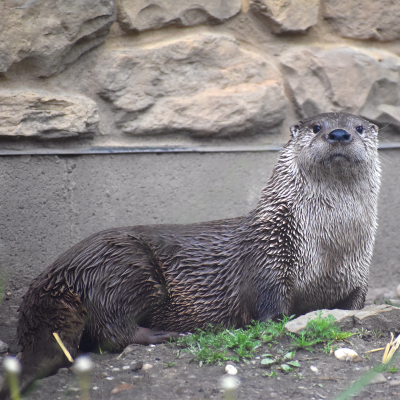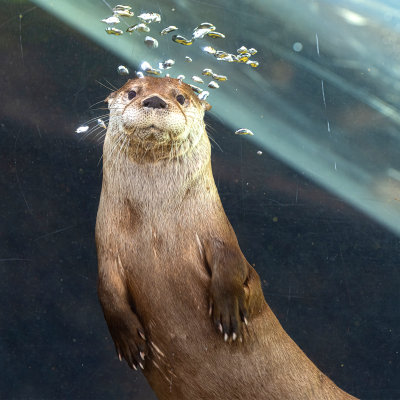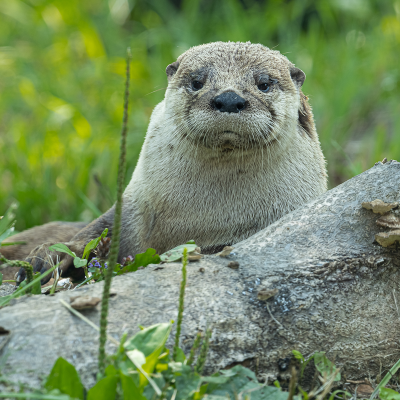About North American River Otters
The North American river otter is a member of the weasel family. It is very well adapted to life in water. Otters have short powerful legs, webbed feet, a streamlined body that is about 2.5 feet long and a tail that is flattened and well-muscled. This tail is important for swimming and makes up about half of the otter's body length.
On average otters weigh about 20 pounds. The dorsal side of the otter's fur is dark brown and the ventral side is light yellow. This is a color adaptation that is known as counter-shading. If a predator is above the otter, when it looks down, the otter blends in with the dark bottom. If a predator is below the otter, when it looks up, the otter blends in with the bright light from above.
Otters also have coarse guard hairs and a thicker undercoat, which helps to waterproof them and keep them warm.
Otters are well known for their playful behavior, especially when they are young. The playfulness of young otters helps them to strengthen social bonds and to practice hunting techniques.
River otters are usually found alone or in pairs but can communicate with others in various ways. They vocalize with whistles, growls, chuckles, and screams. They also communicate through scent markings using their paired scent glands near the base of their tail. These glands produce a strong, musky odor. Otters can also mark by urinating or defecating on vegetation.
Otters prefer the aquatic habitat, but they will also roam on land. When alarmed, however, they make a mad dash for the water. When in water, the otter's nostrils and ears can be closed. They can stay underwater for 6-8 minutes before they need to surface for another breath of air. Otters are usually nocturnal, but they may also be active at both dusk and dawn. They obtain most of their food from their aquatic environment. An otter will use their long whiskers to feel for prey in the aquatic substrate. Prey is captured in the mouth and eaten right away. River otters occupy a top trophic level in the food web and will eat anything that is plentiful in their environment. However, while they have few predators they are still sometimes hunted by alligators, bobcats, and birds of prey.
North American River Otter at the Akron Zoo
Our otters can be found in the Mike & Mary Stark Grizzly Ridge area. This habitat includes a fully enclosed slide for guests that goes through the otter pool.
- Molly – female, born February 26, 2012
- Stratton – male, rescued, estimated birthdate March 15, 2013




